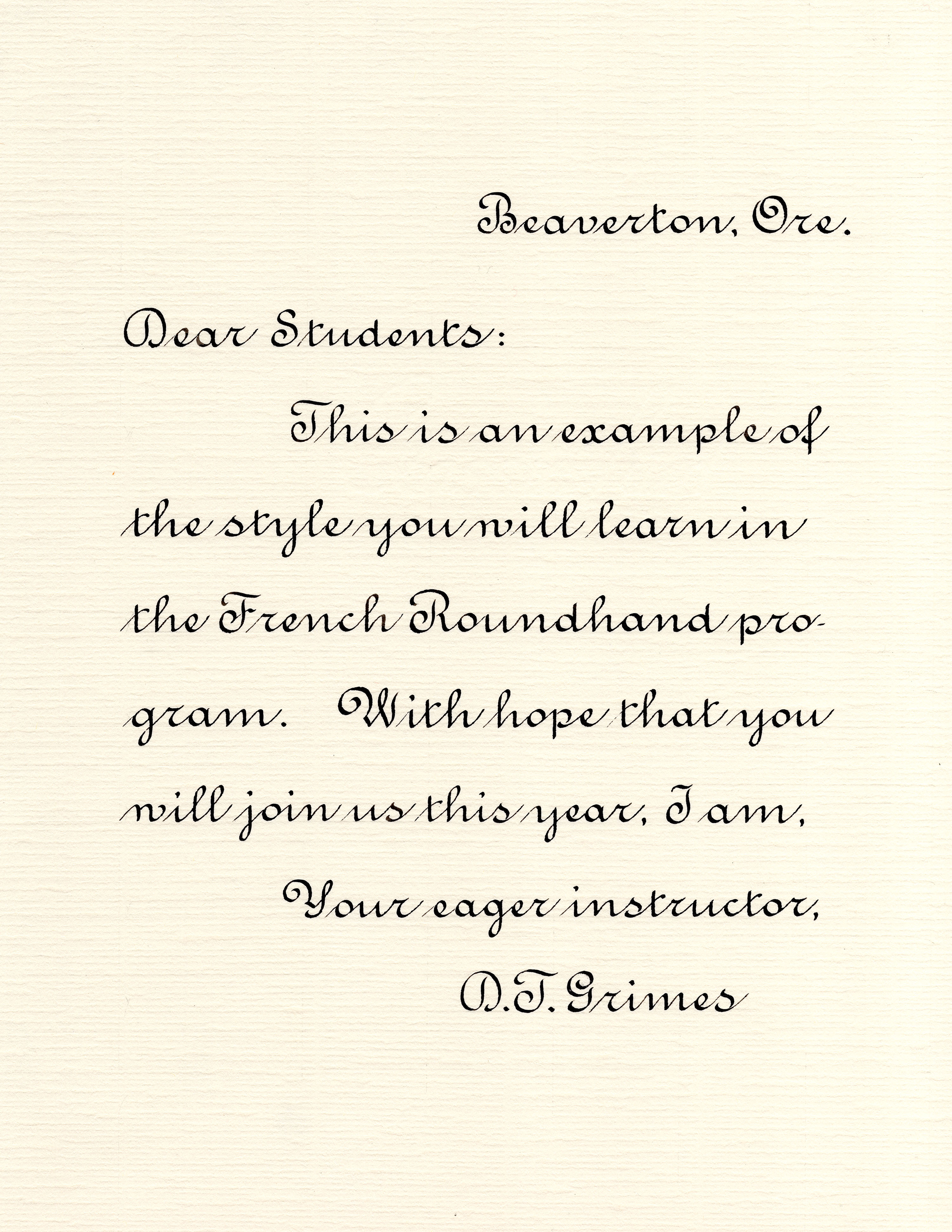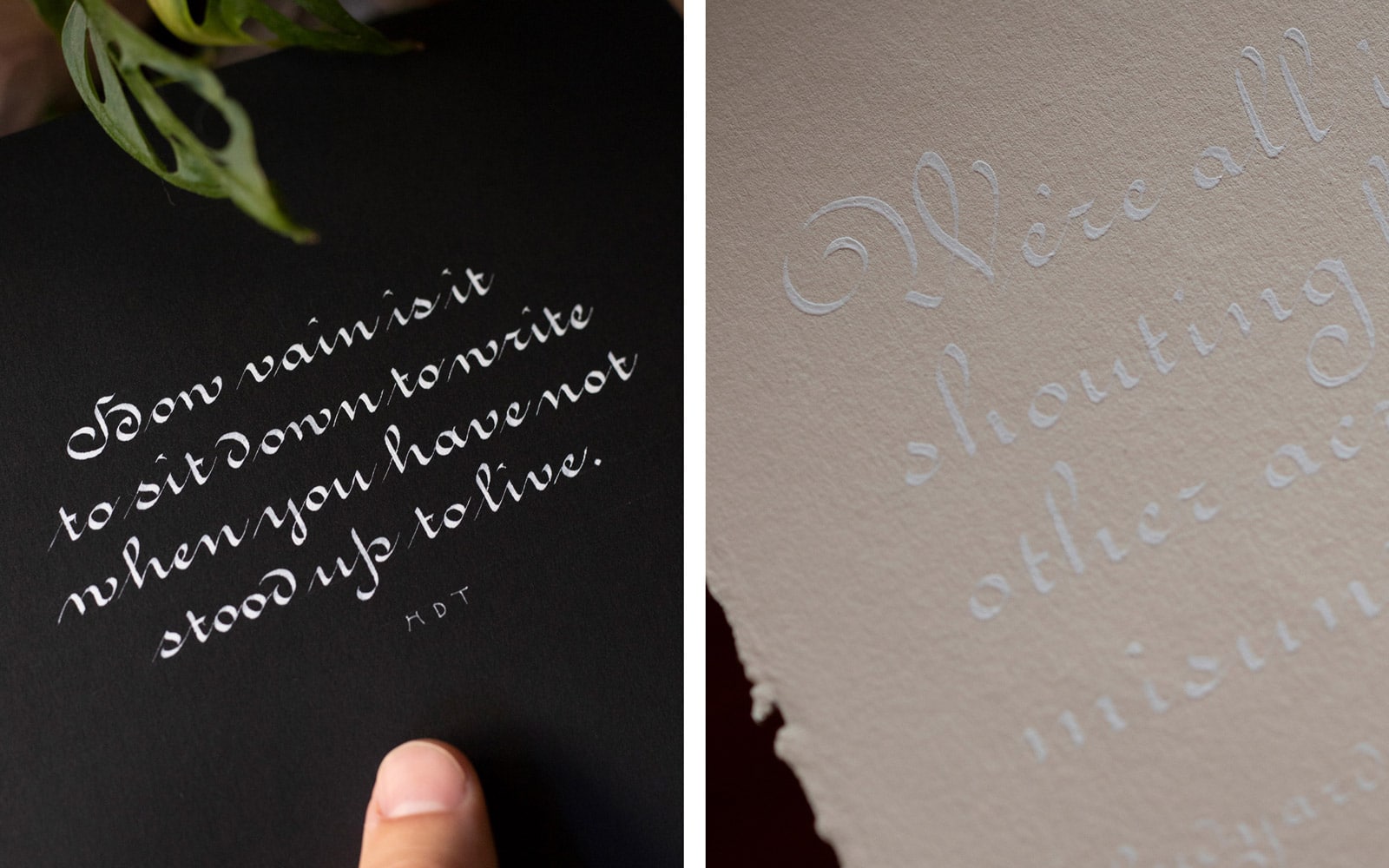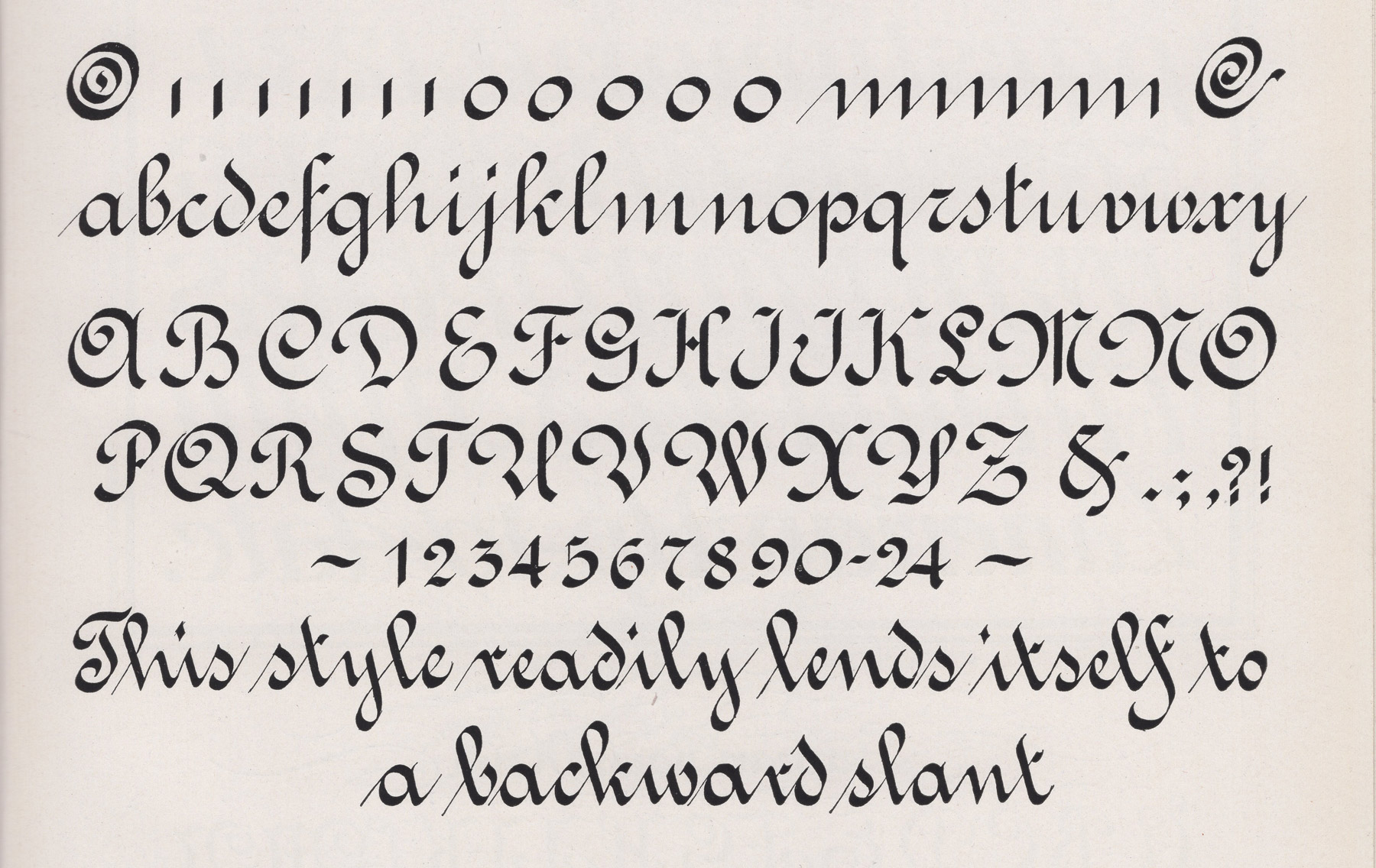French Roundhand
French Roundhand marries the strength of text with the flow and elegance of script. This beautiful hand is an 20th century American adaptation of the 17th century French Ronde.
Learn to produce an easy, systematic, and legible hand. French Roundhand is a wonderful first exposure to the broad pen and provides students with many of the building blocks to branch into other areas of American pen art.

The Curriculum
This course is designed to provide you with the ability to use French Roundhand with confidence and enthusiasm. Modules consist of videos, essays, and diagrams covering all of the information needed to set you up with successful French Roundhand. The syllabus for French Roundhand I is outlined below.
French Roundhand I — syllabus
What are the five Principal Strokes of French Roundhand.
Most calligraphic scripts can be broken down into their principal elements. These elements can then be repeated and combined to form all of the letters present in the hand. French Roundhand is no different! In this section, we cover the Five Principal Strokes of French Roundhand and build a strong foundation for our letter assembly in later sections.
Which are the easiest minuscule letters?
After establishing that all letterforms are comprised of principal elements, and learning those elements in isolation, we are prepared to begin constructing the most basic letterforms. In this section, we learn the letters: i, u, n, m, w, v, o, c, e, a, and r.
What about letters that have strokes other than the Principal Strokes?
Thinking of strokes as the most basic building block of any script is a bit short-sighted. In this lesson, we learn to look deeper than the strokes to extract singular techniques used to create them. Then, using our common sense, we can apply these techniques and our working knowledge of the broad pen to produce any stroke we see with skill and ease.
What’s in a word?
Well, letters, of course! But also strokes and the individual pen techniques that make up the strokes! By thinking about calligraphy in the modular way that we think about chemistry, we can take complicated things (words) and break them down into their basic elements (strokes, or techniques.) In this lesson, we will look at some basic ideas surrounding Word Assembly so that we can put the letters we learned in the previous sections into action.
What are the first majuscule (capital) forms I should learn?
Majuscule letterforms are a bit less common than their minuscule counterparts. Did you know that only between 2-4% of the letters we use when composing sentences are majuscules at all? It makes sense to spend the majority of our effort on the minimum letters, but no comprehensive course would be complete without exploring the majuscules as well. In this section we will cover the letterforms: I, J, H, K, T, F, Z, P, B, R, O, Q, A, and C.
What about the rest of the majuscules?
I break the forms up across two weeks so that we have more time to digest and practice them. In this section we will cover the remaining majuscules: N, M, X, U, V, W, Y, E, S, G, D, and L.
Can I use French Roundhand in a project?
One of the things that I believe is the most valuable experience to new penmen is the act of engaging in projects that use the skills being practiced. In this section, we will tackle a couple of pages from a make-believe Resolution Album. This is a fun collaboration between you and I as student and teacher, and it will force you to investigate some common problem-solving techniques to wrap us successfully.
What are my next steps?
This section concludes our adventure together on a weekly basis, but is only the beginning of your year-long investigation of this beautiful script. In this section we will revisit your goals outlined at the beginning of the course to see if you accomplished them. Then, you can complete the Final Quiz and determine if you want to pursue a Certificate of Merit.

Course Details
The French Roundhand Course is designed to be completed alongside classmates in a cohort-style experience.

(above) A handsome page of French Roundhand by Charles Norder from The Zanerian Manual. Analyzing historic samples is a core part of every DIS program.
Course Duration
This course is released in weekly sections and takes roughly 8 weeks to complete. Students should expect to spend between 2-3 hours each week working through materials and practicing to complete the course in 8 weeks. Lessons consist of pre-recorded videos, diagrams, and essays.
Required Materials
To participate in the lessons of this course, you’ll need:
- A straight pen holder.
- A 2mm broad pen of your choice (Brause, Mitchell, Tape, etc.)
- An ink or writing fluid of your choice. (Walnut, Sumi, Iron Gall, etc.)
- Some paper that you can write on. (such as Neenah Classic Crest Papers)
- One sheet of Arches 90lb Hot Press paper (or similar) for projects.
- A ruler and pencil.
- Access to a printer.
- A computer with access to the internet.
Technology Notice
You are responsible for the technical side of accessing DIS and will occasionally need to research and solve problems with your devices. You are the first line of defense in your own technical support. This course is accessible through smartphone or tablet, but a desktop computer is recommended for the best experience. Please understand that is a fully online course that requires you to interact with digital technology.
